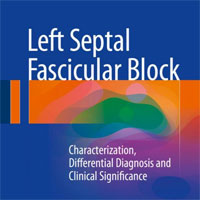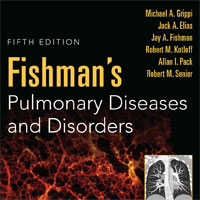Tag: hypertension
Aspirin is Linked with Increased Risk of Heart Failure
Aspirin use is associated with a 26% raised risk of heart failure in people with at least one predisposing factor for the condition. That’s the finding of a study published today in ESC Heart Failure, a journal of the European... read more
Diaphragm Dysfunction After Cardiac Surgery
Symptomatic diaphragmatic dysfunction was found in 7.6% of patients after cardiac surgery. It led to an increase of respiratory complications, such as pneumonia, prolonged ventilation, and intensive care. Coronary bypass... read more
Selective serotonin reuptake inhibitors or serotonin-norepinephrine reuptake inhibitors in pregnancy
This position statement provides guidance for the monitoring, care, and follow-up of newborns exposed to selective serotonin reuptake inhibitors (SSRIs) or serotonin-norepinephrine reuptake inhibitors (SNRIs) in utero. Depression... read more
Point-of-Care Transcranial Doppler by Intensivists
In the unconscious patient, there is a diagnostic void between the neurologic physical exam, and more invasive, costly and potentially harmful investigations. Transcranial color-coded sonography and two-dimensional transcranial... read more
A Systematic Review of the Incidence and Outcomes of In-Hospital Cardiac Arrests in Patients with COVID-19
Approximately, one in 20 patients hospitalized with coronavirus disease 2019 received resuscitation for an in-hospital cardiac arrest. Hospital survival after in-hospital cardiac arrest within the ICU was higher than non-ICU... read more
Effect of Continuous Infusion of Hypertonic Saline vs. Standard Care in Patients With TBI
Among patients with moderate to severe traumatic brain injury (TBI), treatment with continuous infusion of 20% hypertonic saline compared with standard care did not result in a significantly better neurological status at... read more
Discharged IMV COVID-19 Survivors Not Functionally Independent
The majority of invasive mechanical ventilation (IMV) COVID-19 survivors were not functionally independent at discharge and required significant follow-up medical care. The COVID-19 circumstance has placed constraints on... read more
Prior Exposure to Angiotensin II Receptor Blockers in Patients With Septic Shock to Individualize Mean Arterial Pressure Target?
Our results suggest that patients with septic shock and chronic hypertension treated with angiotensin II receptor blocker may benefit from a high mean arterial pressure target to reduce the risk of acute kidney injury occurrence. We... read more
When I Use a Word… Homeostasis and Allostasis
In most cases we do not know who first coined or even used a word. Evidence can generally be found of the earliest instance of a word in written texts, but we do not have a written history of speech nor vocal recordings earlier... read more
Left Septal Fascicular Block
This book provides clinical and electrovectorcardiographic evidence of the existence of left septal fascicular blocks and demonstrates the clinical importance of these blocks in the clinical scenario of acute coronary syndrome.... read more

Early Mobilization of Patients Receiving Vasoactive Drugs in Critical Care Units
Evidence determining specific doses of vasoactive drugs that would allow safe mobilization of patients in critical care is lacking. The criteria that have been used to determine the eligibility to mobilize patients on vasoactive... read more
Safety and Efficacy of B-Cell Depletion with Rituximab for the Treatment of SSc-PAH
B cell depletion therapy is a potentially effective and safe adjuvant treatment for systemic sclerosis-pulmonary arterial hypertension (SSc-PAH). Future studies in these patients can confirm whether the identified biomarkers... read more
Oxidized DNA Precursors Cleanup by NUDT1 Contributes to Vascular Remodeling in Pulmonary Arterial Hypertension
By overexpressing NUDT1, PAH-PASMCs hijack persistent oxidative stress in preventing incorporation of oxidized nucleotides into DNA, thus allowing the cell to escape apoptosis and proliferate. Given that NUDT1 inhibitors... read more
Targeting MAP in Sepsis
What’s your target mean arterial pressure (MAP) for patients with sepsis? Do you believe in the magic number of 65? What about those patients with chronic hypertension? What about when there is no evidence of end organ... read more
Is Cardiopulmonary Resuscitation Futile in COVID-19 Patients Experiencing In-Hospital Cardiac Arrest?
COVID-19 patients suffering from in-hospital cardiac arrest had 100% in-hospital mortality regardless of the baseline comorbidities, presenting illness severity, and location of arrest. Out of 1,094 patients hospitalized... read more
Pulmonary Hypertension: ED Presentation, Evaluation, and Management
Pulmonary hypertension (PH), characterized by increased pulmonary vascular resistance and pulmonary arterial pressure, is associated with significant morbidity and mortality. The disease is heterogenous, with varying demographics... read more
Systematic Approach to the Peripheral Vascular Exam: Pearls & Pitfalls
A 62-year-old male with a history of hypertension, congestive heart failure, type II diabetes mellitus, and tobacco use presents to the emergency department (ED) with severe left lower leg pain that started six hours ago.... read more
Increasing suction pressure during endotracheal suctioning increases the volume of suctioned secretions
It may be assumed that 250 mmHg suction pressure, via compliance with open system suction method related procedures, is being more effective and equally safe for secretion cleaning in comparison to the 80 and 150 mmHg suction... read more
Fishman’s Pulmonary Diseases and Disorders
Since 1980, Fishman's Pulmonary Diseases and Disorders has delivered unparalleled coverage of pulmonary medicine and the underlying basic and applied science upon which clinical practice is based. The Fifth Edition, with... read more

Failing to Learn and Learning to Fail
Last week saw the publication of yet another damning report shining a spotlight on the culture of cover up and denial in our healthcare system. Bill Kirkup’s report—”The Life and Death of Elizabeth Dixon: A Catalyst... read more
Dual Therapy Using Sildenafil and Milrinone Superior to Monotherapy in Neonates with Severe PPHN
Dual therapy using sildenafil and milrinone was superior to monotherapy with either drug in neonates with severe persistent pulmonary hypertension (PPHN) and is recommended for use in resource-constrained settings. A double-blind... read more
A Concise Overview of Non-invasive IAP Measurement Techniques
This review presents an overview of previously reported non-invasive intra-abdominal pressure (IAP) measurement techniques. Each section covers the basic physical principles and methodology of the various measurement techniques,... read more









